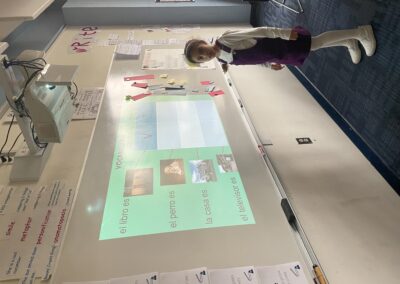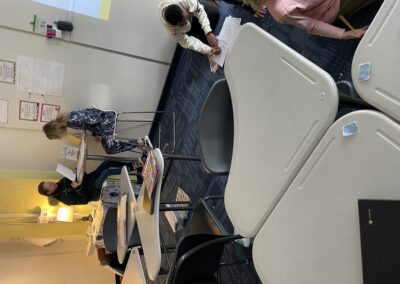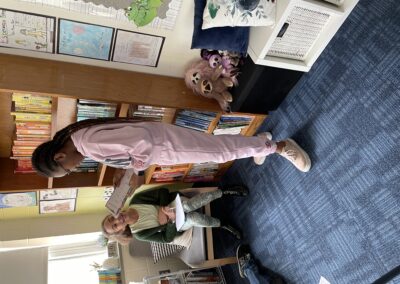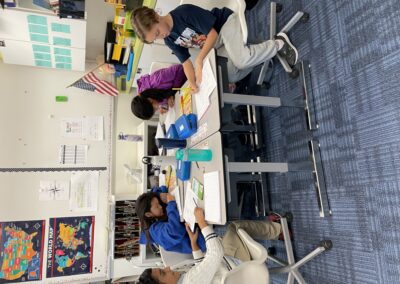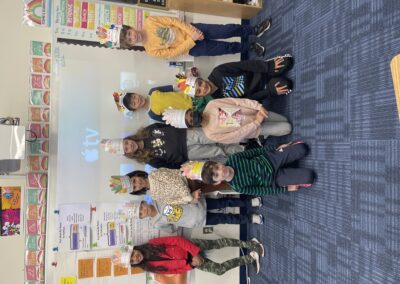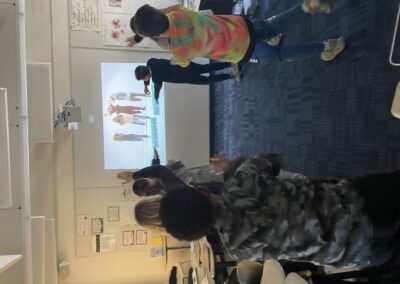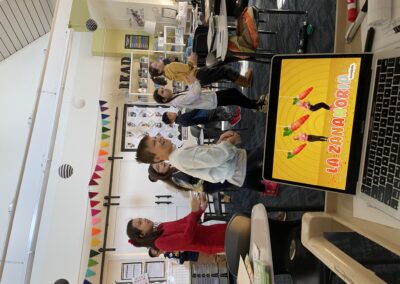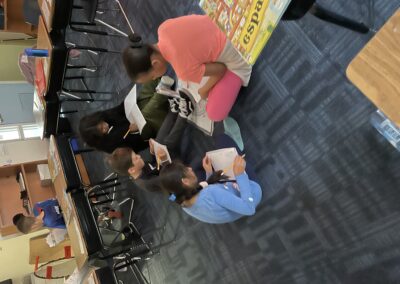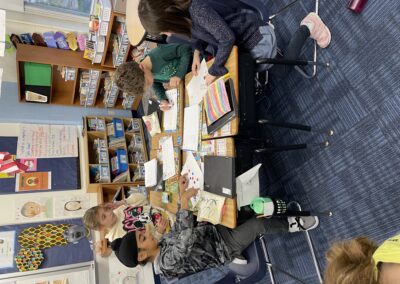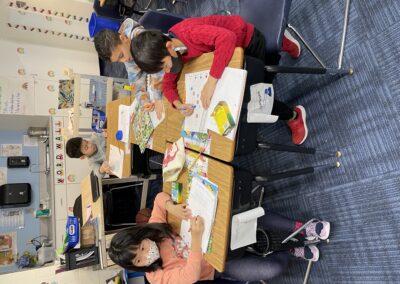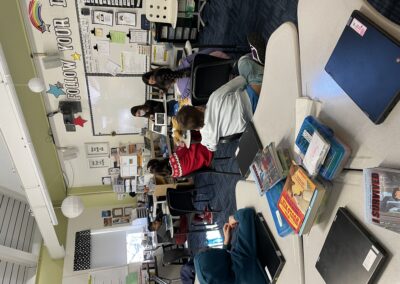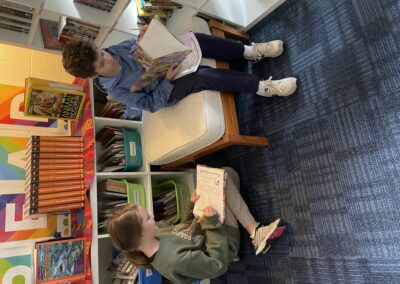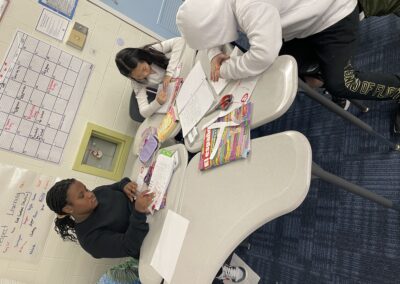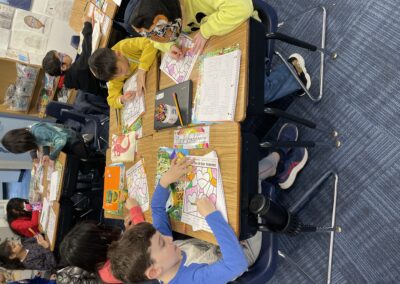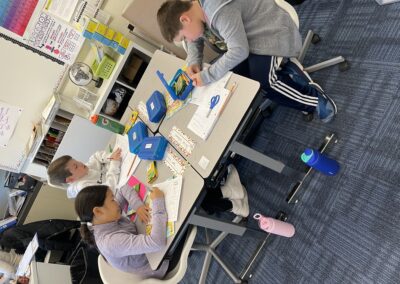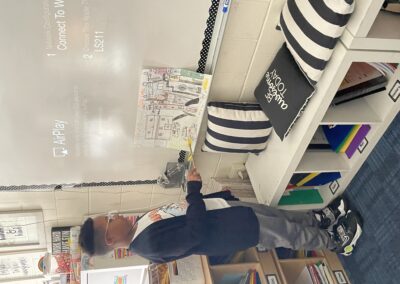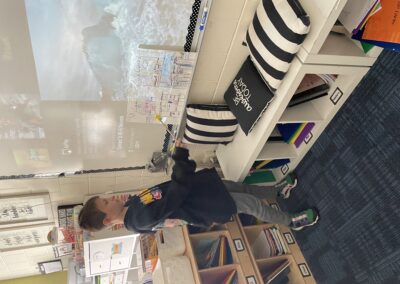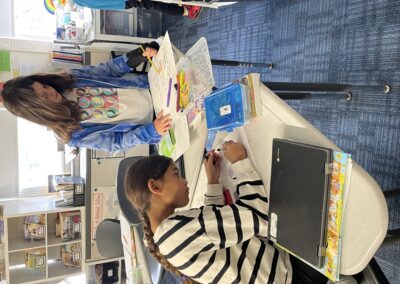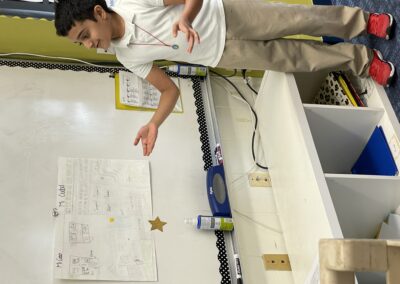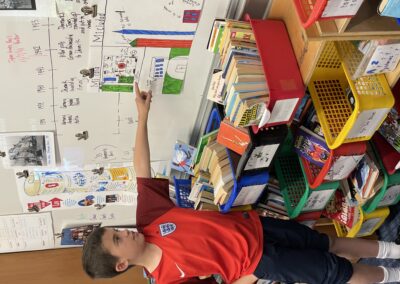In the second semester, students in third, fourth, and fifth grade read poems and short stories based on the season, which help their reading comprehension of the Spanish language. They have also learned new vocabulary words about the season, greetings, holidays, weather, and feelings. Also, the students in each class reviewed the calendar such as fecha, dia, mes y año. Each grade has reviewed and learned to write and say the numbers in Spanish. Students have also practiced communication skills in Spanish by having conversations about the different topics taught in class. The students practiced the pronunciation of the new vocabulary by asking questions and answering in Spanish in complete sentences. Using music, videos, games, and presentations, students practice speaking, reading, and writing in the Spanish language.
In Third grade, the students learned different adjectives each week, which helped them write complete sentences. They also learned to write and pronounce the different members of the family. Students learned the different parts of the body and the clothing and accessories. The students have written, read, and drawn the different animals. Students will continue learning about the city, the house, the opposites of the adjectives, and more. Additionally, they will continue reading short stories to improve their comprehension of the Spanish language and learning about holidays such as Cinco de Mayo.
The fourth-grade students learned about the parts of a house and a city. They made a poster in which they drew the house and the city of their dreams. Practicing pronunciation, students made a presentation in class and recorded a short video explaining the poster using only Spanish vocabulary. They also read poems and short stories, practicing reading comprehension and learning new vocabulary words. Using new vocabulary words, students learned to write, read, and pronounce articles or objects in the classroom. They also learned to use definite and indefinite articles by using them in complete sentences in plural or singular form. Students will continue learning food, prepositions, family, possessive adjectives, and more. They will also continue reading short stories and practicing conversations in Spanish.
The fifth-grade students learned to use singular and plural personal pronouns to make complete sentences. Also, they have learned the conjugation of verbs that end in “ar”, and the verb “to like” depending on the plural and singular pronouns in the present tense. They also practiced how to write, read and pronounce numbers with 6 digits in Spanish. Reading comprehension practice has been done by reading and analyzing short stories and poems. Students studied the different descriptive and quantitative adjectives which helped them to speak and write complete sentences. In order to practice the Spanish language in comprehension, writing, and speaking, they completed several exercises using the Duolingo website which they used at home and sometimes in class. They had a visit from a high school Spanish student who presented on cuisine and Spanish culture in different Latin American countries. The students created questions for this visitor which allowed for more practice in speaking the Spanish language. Students will continue learning about the conjugation of the verb “to be” and about food, household chores, and more.

